How to Use This Curriculum
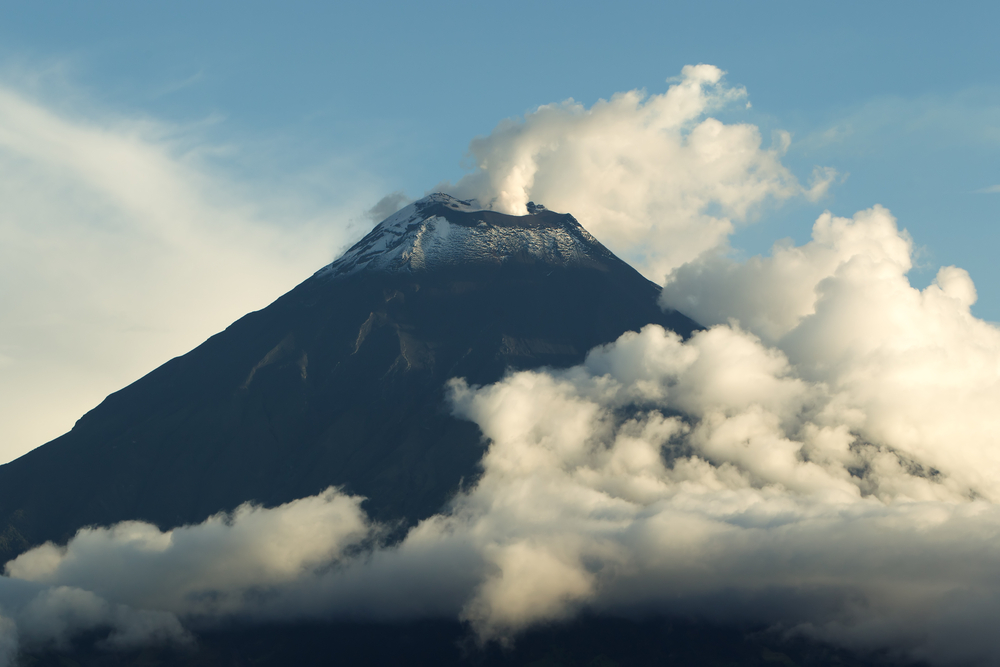
First rule: There are no rules. These resources are completely free and at your disposal. Use as much, or as little, as you want. Study casually, or work to create a portfolio of academic work that will blow the socks off of the educational establishment.
Feel free to adapt the materials for your own purposes. We expect families, business people, backpackers, college students, high school kids, middle aged vacationers, and retirees who are on a late life adventure to take these materials and run with them. We’d be very happy for teachers or travel group leaders to add these materials to their study abroad packets as well.
The nature of open source is collaboration, so please feel free to contribute when you become aware of resources we haven’t listed, or you have project ideas that we haven’t developed. Send us your work and inspire others to reach higher and deeper as they travel!
Our goal with this project is to inspire adventure and further education through experiential learning around the world. Please send us a note and let us know how you used these resources!
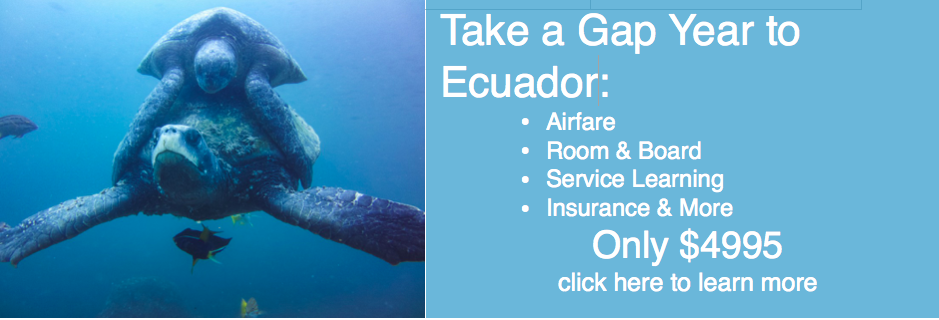
Buffet Style Learning
Does the menu look overwhelming? Looking for a formula to use as a skeleton for your studies in Guatemala?
Choose:
- Two books
- Two films
- Three articles
- One Problem & Solution or Project Option
- One Cultural Assignment
Table of Contents
- Books
- Films
- Articles
- Project Options
- Problems & Solutions
- Cultural Assignments
- Create Your Own Coursework
Book Recommendations
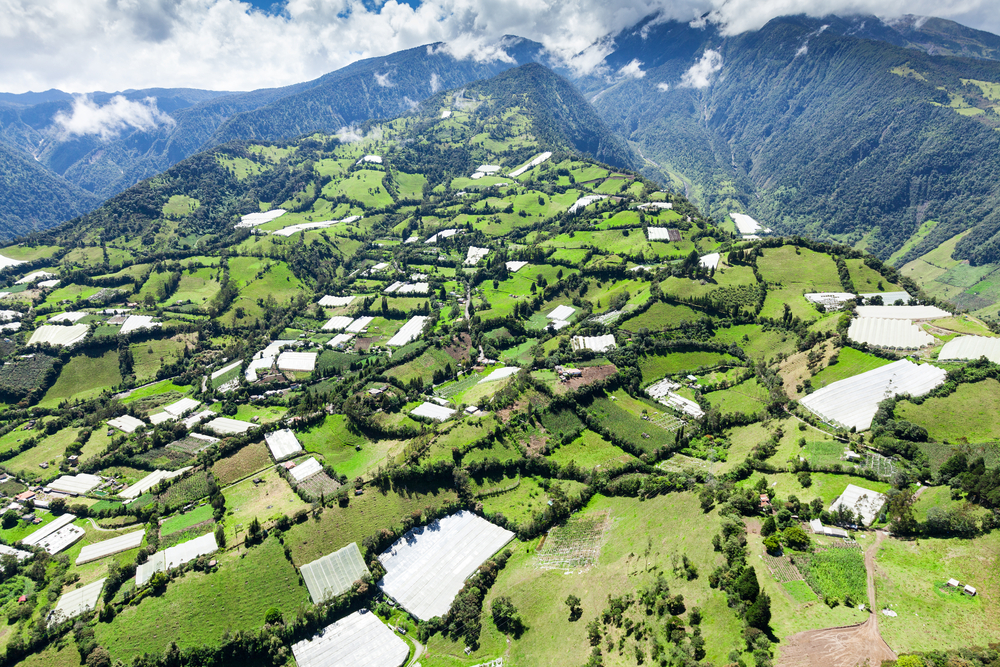
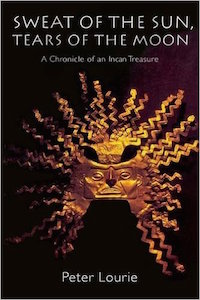 Sweat of the Sun, Tears of the Moon: A Chronicle of an Incan Treasure
Sweat of the Sun, Tears of the Moon: A Chronicle of an Incan Treasure
by Peter Lourie
Eight billion dollars’ worth of Inca gold and silver are rumored to be hidden in an unmapped region of the Andes. This is the captivating story of that fabled treasure and the centuries-old spell it has cast on many, including a young American student, Peter Lourie.
While completing anthropological fieldwork in Ecuador, Lourie heard the legend of Atahualpa’s ransom. The Incas gathered seven-hundred tons of gold (Sweat of the Sun) and silver (Tears of the Moon) to purchase the freedom of their king, Atahualpa, from Pizarro and his conquistadors. After the Inca ruler’s murder, the treasure vanished into the forsaken Llanganati range of the Andes.
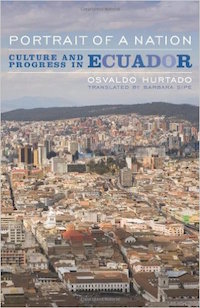 Portrait of a Nation: Culture & Progress in Ecuador
Portrait of a Nation: Culture & Progress in Ecuador
by Osvaldo Hurtado & Barbara Sipe (Translator)
A case study of why Third World countries are still poor, the premise of this book is that while some progress has been made in transforming the political economy of Ecuador, certain behaviors, beliefs and attitudes have kept the country from developing in ways that otherwise would have been possible.
As the author asserts, for almost five centuries the cultural habits of Ecuadorian citizens have constituted a stumbling block for individual economic success. Still, he concludes, people’s cultural values are not immutable: inconvenient customs can be changed or influenced by the economic success of immigrants. This is the challenge that Ecuador faces in the twenty-first century.
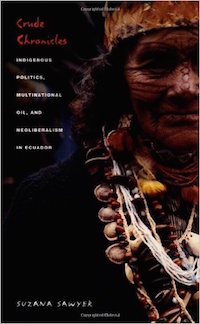 Crude Chronicles: Indigenous Politics, Multinational Oil, and Neoliberalism in Ecuador
Crude Chronicles: Indigenous Politics, Multinational Oil, and Neoliberalism in Ecuador
by Suzana Sawyer
Ecuador is the third-largest foreign supplier of crude oil to the western United States. As the source of this oil, the Ecuadorian Amazon has borne the far-reaching social and environmental consequences of a growing U.S. demand for petroleum and the dynamics of economic globalization it necessitates. Crude Chronicles traces the emergence during the 1990s of a highly organized indigenous movement and its struggles against a U.S. oil company and Ecuadorian neoliberal policies. Against the backdrop of mounting government attempts to privatize and liberalize the national economy, Suzana Sawyer shows how neoliberal reforms in Ecuador led to a crisis of governance, accountability, and representation that spurred one of twentieth-century Latin America’s strongest indigenous movements.
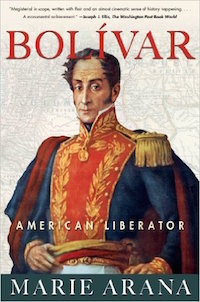 Bolivar: American Liberator
Bolivar: American Liberator
by Marie Arana
A brilliant biography that “reads like a wonderful novel but is researched like a masterwork of history” (Walter Isaacson, author of Steve Jobs), this is the epic story of the famous South American general and statesman Simón Bolívar.
SIMÓN BOLÍVAR —El Libertador—freed six countries from Spanish rule and is still the most revered figure in South America today. He traveled from Amazon jungles to the Andes mountains, engaged in endless battles and forged fragile coalitions of competing forces and races. He lived an epic life filled with heroism, tragedy (his only wife died young), and legend (he was saved from an assassination attempt by one of his mistresses). In Bolívar, Marie Arana has written a sweeping biography that is as bold and as passionate as its subject.
Drawing on a wealth of primary documents, Arana vividly captures the early nineteenth-century South America that made Bolívar the man he became: fearless general, brilliant strategist, consummate diplomat, dedicated abolitionist, gifted writer, and flawed politician. A major work of history, Bolívar not only portrays a dramatic life in all its glory, but is also a stirring declaration of what it means to be South American.
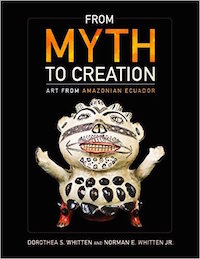 From Myth to Creation: Art from the Ecuadorian Amazon
From Myth to Creation: Art from the Ecuadorian Amazon
by Dorthea S. Whitten & Norman Whitten
Lavishly illustrated with over 100 photos, the second edition of From Myth to Creation offers a dramatic insider’s view of the cognitive and symbolic worlds of indigenous potters and woodworkers in a region undergoing radical change.
By placing Canelos Quichua art in social and cultural context, the text invites readers to better understand and appreciate the art, aesthetics, and the historical and contemporary consciousness of indigenous Americans. This new edition includes a new foreword and chapter.
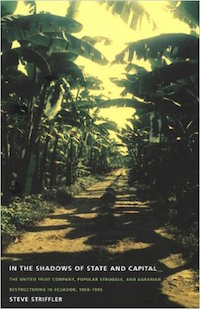 In the Shadows of State and Capital: The United Fruit Company, Popular Struggle, and Agrarian Restructuring in Ecuador, 1900–1995
In the Shadows of State and Capital: The United Fruit Company, Popular Struggle, and Agrarian Restructuring in Ecuador, 1900–1995
by Steve Striffler
Winner of the 2001 President’s Award of the Social Science History Association
In the Shadows of State and Capital tells the story of how Ecuadorian peasants gained, and then lost, control of the banana industry. Providing an ethnographic history of the emergence of subcontracting within Latin American agriculture and of the central role played by class conflict in this process, Steve Striffler looks at the quintessential form of twentieth-century U.S. imperialism in the region—the banana industry and, in particular, the United Fruit Company (Chiquita). He argues that, even within this highly stratified industry, popular struggle has contributed greatly to processes of capitalist transformation and historical change.
Striffler traces the entrance of United Fruit into Ecuador during the 1930s, its worker-induced departure in the 1960s, the troubled process through which contract farming emerged during the last half of the twentieth century, and the continuing struggles of those involved. To explore the influence of both peasant activism and state power on the withdrawal of multinational corporations from banana production, Striffler draws on state and popular archives, United Fruit documents, and extensive oral testimony from workers, peasants, political activists, plantation owners, United Fruit administrators, and state bureaucrats. Through an innovative melding of history and anthropology, he demonstrates that, although peasant-workers helped dismantle the foreign-owned plantation, they were unable to determine the broad contours through which the subsequent system of production—contract farming—emerged and transformed agrarian landscapes throughout Latin America.
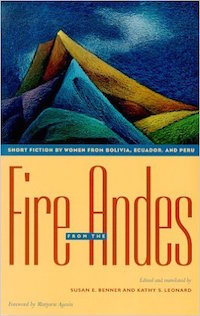 Fire From the Andes–Short Fiction by Women From Bolivia, Ecuador & Peru
Fire From the Andes–Short Fiction by Women From Bolivia, Ecuador & Peru
Edited by Susan E. Benner & Kathy S. Leonard
This anthology provides an opportunity for English-speaking audiences to read previously untranslated fiction by women from Bolivia, Ecuador, and Peru. Much of this work is inspired by an awareness of social injustice–particularly for women, indigenous groups, and other marginalized members of society and by a desire to transcend that injustice through personal revelation. Most of the stories focus on women’s inner lives and their struggles to make sense of experience.
Like Mónica Bravo’s heroine attempting to outwit death, or the mayor’s wife, in a story by Alicia Yánez Cossío, surviving the news of her husband’s infidelity, many of the protagonists are strong women, wise and shrewd. Perhaps the same could be said of the twenty-four authors who have drawn from their experience and imagination to create these compelling, often haunting, stories of life, liberty, love, and loss.
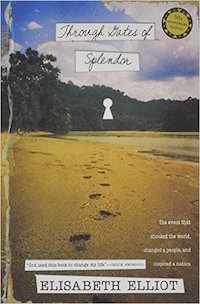 Through Gates of Splendor
Through Gates of Splendor
by Elizabeth Elliot
Through Gates of Splendor is a 1957 best selling book written by Elisabeth Elliot. The book tells the story of Operation Auca, an attempt by five American missionaries – Jim Elliot (the author’s husband), Pete Fleming, Ed McCully, Nate Saint, and Roger Youderian – to reach the Huaorani tribe of eastern Ecuador. All five of the men were killed by the tribe. The book is Elliot’s first book, and arguably her most well known work.
The title of the book is derived from the fourth stanza of the hymn “We Rest on Thee”. This hymn was famously sung by the missionaries before the men left for Waodaoni territory in September 1955. The lines read:[1] We rest on Thee, our Shield and our Defender. Thine is the battle, Thine shall be the praise; When passing through the gates of pearly splendor, Victors, we rest with Thee, through endless days. Elliot wrote the book while still a missionary in Ecuador.
She wrote the book at the request and cooperation from the families of the five men. She was given copies of letters and other writings which were extensively quoted from in the book. The original edition of the book was published in 1957, one year before the first peaceful contact with the Huaorani was made. In subsequent publications of the book, epilogues have been added to tell about what has happened to the Huaorani tribe since Operation Auca, and what has happened to the missionaries’ families.
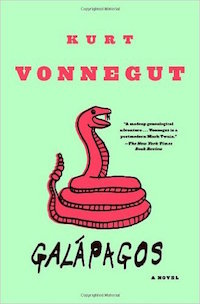 Galapagos: A Novel
Galapagos: A Novel
by Kurt Vonnegut
Galápagos takes the reader back one million years, to A.D. 1986. A simple vacation cruise suddenly becomes an evolutionary journey. Thanks to an apocalypse, a small group of survivors stranded on the Galápagos Islands are about to become the progenitors of a brave, new, and totally different human race. In this inimitable novel, America’s master satirist looks at our world and shows us all that is sadly, madly awry–and all that is worth saving.
 The Beak of the Finch: A Story of Evolution in Our Time
The Beak of the Finch: A Story of Evolution in Our Time
by Jonathan Weiner
On a desert island in the heart of the Galapagos archipelago, where Darwin received his first inklings of the theory of evolution, two scientists, Peter and Rosemary Grant, have spent twenty years proving that Darwin did not know the strength of his own theory. For among the finches of Daphne Major, natural selection is neither rare nor slow: it is taking place by the hour, and we can watch.
In this dramatic story of groundbreaking scientific research, Jonathan Weiner follows these scientists as they watch Darwin’s finches and come up with a new understanding of life itself. The Beak of the Finch is an elegantly written and compelling masterpiece of theory and explication in the tradition of Stephen Jay Gould.
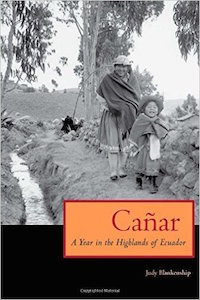 Canar: A Year in the Highlands of Ecuador
Canar: A Year in the Highlands of Ecuador
by Judy Blankenship
Once isolated from the modern world in the heights of the Andean mountains, the indigenous communities of Ecuador now send migrants to New York City as readily as they celebrate festivals whose roots reach back to the pre-Columbian past. Fascinated by this blending of old and new and eager to make a record of traditional customs and rituals before they disappear entirely, photographer-journalist Judy Blankenship spent several years in Cañar, Ecuador, photographing the local people in their daily lives and conducting photography workshops to enable them to preserve their own visions of their culture. In this engaging book, Blankenship combines her sensitively observed photographs with an inviting text to tell the story of the most recent year she and her husband Michael spent living and working among the people of Cañar.
Very much a personal account of a community undergoing change, Cañar documents such activities as plantings and harvests, religious processions, a traditional wedding, healing ceremonies, a death and funeral, and a home birth with a native midwife. Along the way, Blankenship describes how she and Michael went from being outsiders only warily accepted in the community to becoming neighbors and even godparents to some of the local children. She also explains how outside forces, from Ecuador’s failing economy to globalization, are disrupting the traditional lifeways of the Cañari as economic migration virtually empties highland communities of young people. Blankenship’s words and photographs create a moving, intimate portrait of a people trying to balance the demands of the twenty-first century with the traditions that have formed their identity for centuries.
 Gender, State, and Medicine in Highland Ecuador: Modernizing Women, Modernizing the State, 1895-1950
Gender, State, and Medicine in Highland Ecuador: Modernizing Women, Modernizing the State, 1895-1950
In 1921 Matilde Hidalgo became the first woman physician to graduate from the Universidad Central in Quito, Ecuador. Hidalgo was also the first woman to vote in a national election and the first to hold public office.
Author Kim Clark relates the stories of Matilde Hidalgo and other women who successfully challenged newly instituted Ecuadorian state programs in the wake of the Liberal Revolution of 1895. New laws, while they did not specifically outline women’s rights, left loopholes wherein women could contest entry into education systems and certain professions and vote in elections. As Clark demonstrates, many of those who seized these opportunities were unattached women who were socially and economically disenfranchised.
Training women for work meant expanding secular education systems and normal schools. Healthcare initiatives were also introduced that employed and targeted women to reduce infant mortality, eradicate venereal diseases, and regulate prostitution.
Many of these state programs attempted to control women’s behavior under the guise of morality and honor. Yet highland Ecuadorian women used them to better their lives and to gain professional training, health care, employment, and political rights. As they engaged state programs and used them for their own purposes, these women became modernizers and agents of change, winning freedoms for themselves and future generations.
For Kids
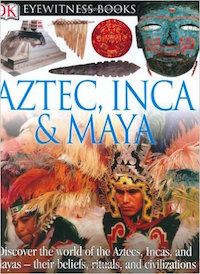 Aztec, Inca & Maya
Aztec, Inca & Maya
by Elizabeth Baquedano & Barry Clarke (DK Eyewitness Books)
Here is an original and exciting guide to the Aztecs, Incas, and Mayas — and the people who went before them. Stunning full-color photographs of weapons and tools, sculpture, metalwork and ceramics offer a unique “eyewitness” view of these rich and complex civilizations. See an Aztec sacrificial knife, a Teotihuacan mask made from turquoise and coral, a life-size statue of an eagle warrior and a Peruvian mummy bundle. Learn what a Mayan market looked like, why jade was so valuable to the people of Mesoamerica, the techniques used by Aztec goldsmiths and why the quetzal bird was so important. Discover why the Aztecs made human sacrifices, how to play the ball game, what sort of clothes Mayan women wore and how the Mayan calendar worked. And much, much more!”
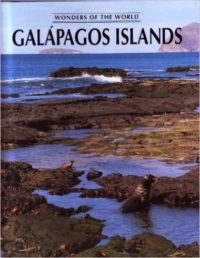 Galapagos Islands
Galapagos Islands
by Jean Blashfield (Wonders of the World)
Closeup looks at two unusual parts of the world. Galapagos describes the volcanic origins of these equatorial islands due west of Ecuador, the animals that make these islands their home, and the human inhabitants. There is also a significant discussion of the work of Charles Darwin and his visit in 1835. (Galapagos Islands is) clearly and objectively written. The language and style make difficult concepts easily understandable to the target audience and the abundance of colorful and appropriately selected photographs add to their appeal. A comprehensive index facilitates access to the information, and the suggestions for further information include videos. A map at the beginning of the volume serves to give readers a sense of place. — Linda Greengrass, Bank Street College Library, New York City.
 Roses for Isabella
Roses for Isabella
by Diana Cohn & Amy Cordova
Roses for Isabella invites us to experience life in Ecuador through the eyes of a young girl who keeps a journal and loves to write. We learn about Isabella’s parents who work on one of the hundreds of farms growing beautiful roses that are sold all over the world. But not all of these farms are fair to workers and kind to the earth. Through Isabella, we learn how her family’s life changes for the better when her parents find work at a Fair Trade farm.
Written by award-winning author, Diana Cohn and brilliantly illustrated by award-winning artist Amy Córdova, Roses for Isabella will touch the hearts of children and parents, as well as introduce them to the cultural traditions of Ecuador and the importance of making choices that support Fair Trade products.
 Ecuador
Ecuador
by Milivojevic (Enchantment of the World)
Film Recommendations
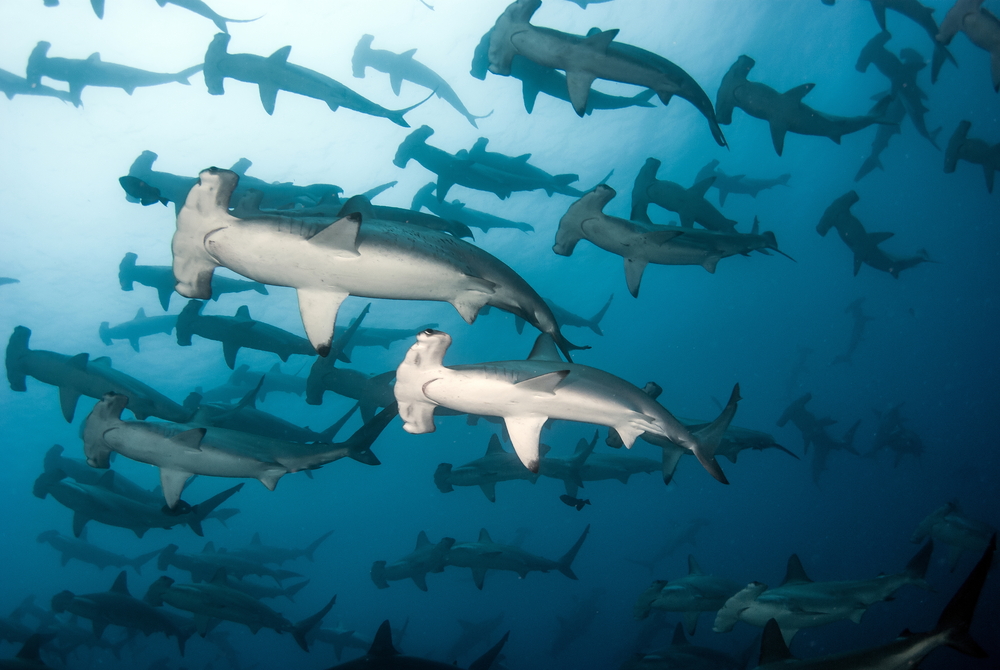
Cultures at the Far Edge of the World by Wade Davis
Galapagos Affair: Satan Came to Eden
Charles Darwin and the Tree of Life
Charles Darwin and the Tree of Life – David… by Channel1859
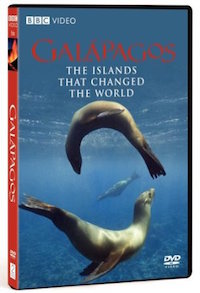 Galapagos: The Islands That Changed the World
Galapagos: The Islands That Changed the World
The inspiration for Darwin’s theory of evolution, the Galapagos Islands are a living laboratory, a geological conveyor belt that has given birth to and seen the death of many species of plants and animals. As the western islands rise up from the sea offering a chance of life, the eastern islands sink back beneath the waves guaranteeing only death. Between the two are the middle islands; fertile, lush land in its prime that contains an incredible diversity of life. Nowhere else on the Earth are the twin processes of creation and extinction of species so starkly apparent… see it all unfold before your eyes in this stunning series filmed entirely in high definition from the BBC and the National Geographic Channel.
Huaorani Tribe – The Most Fearsome Tribe In The Amazon – Amazing Documentary TV
They make up nearly 4,000 residents as well as speak the Huaorani language, a linguistic isolate that is not understood to be associated to any type of other language.
Their ancestral lands are found in between the Curaray and also Napo streams, concerning 50 miles (80 km) south of El Coca. These homelands– about 120 miles (190 km) vast and also 75 to 100 miles (120 to 160 km) from north to south– are intimidated by oil exploration and unlawful logging practices. In the previous, Huaorani were able to secure their culture and lands from both aboriginal enemies and also settlers.
BBC Nature documentary | Galapagos Islands : Traveling to the Galápagos Islands
An amazingly immersive cinematic experience, Galapagos delves deep into the largely unknown waters surrounding the volcanic archipelago to explore the natural wonders of a realm that is truly a living natural science laboratory.
Using Harbor Branch Oceanographic Institution’s research vessel, the SEWARD JOHNSON as the mother ship-and their high-tech submersible JOHNSON-SEA-LINK-the highly distinguished research and filmmaking team deployed technology light years ahead of the crude instruments Charles Darwin had at his disposal during his famous 1835 visit to the region.
Crude: The $8.6 Billion Verdict Against Chevron for Polluting Ecuador
“Chevron’s strategy in recent years has been, ‘we’ll bleed the plaintiffs dry,’ ” said Robert Percival, director of the environmental law program at the University of Maryland. ” ‘The plaintiffs will run out of money, and we’ll be able to settle really cheaply, or they’ll just go away.’ ” (sfgate.com)
Crude is a must-watch documentary by Joe Berlinger that exposes the true dangers of oil extraction. Everyone should know this information. Please support the filmmakers.
Fossil fuel extraction is common world wide and massively pollutes our fresh water supplies and our environment (see my other videos for the impact of other fossil fuels and more on the world wide water crisis).
The Inca Empire
From 1438 to 1533, the Incas used a variety of methods, from conquest to peaceful assimilation, to incorporate a large portion of western South America, centered on the Andean mountain ranges, including, besides Peru, large parts of modern Ecuador, western and south central Bolivia, northwest Argentina, north and central Chile, and a small part of southern Colombia into a state comparable to the historical empires of Eurasia. The official language of the empire was Quechua, although hundreds of local languages and dialects of Quechua were spoken. Many local forms of worship persisted in the empire, most of them concerning local sacred Huacas, but the Inca leadership encouraged the worship of Inti—their sun god—and imposed its sovereignty above other cults such as that of Pachamama. The Incas considered their king, the Sapa Inca, to be the “son of the sun
Women’s Rights Activists in Ecuador
Cañar, Ecuador: Birth and Indigenous Identity in the 21st Century
How Shrimping Has Destroyed Ecuador’s Ecosystem
For downloads and more information visit: http://www.journeyman.tv/?lid=66263
Ecuador is the fifth largest producer of shrimp worldwide; generating over one billion dollars a year. But while the industry is a prosperous one, it has come at a huge social and environmental cost.
“Nature has been poorly treated, weakened, endangered. And more important, the population whose livelihoods depend on this resource is being endangered”, says Lider Gongora, an environmental activist, highlighting how Ecuador’s fragile ecosystem has become devastated by extensive farming. Although the industry employs 250,000 people in Ecuador alone, the remaining communities are being pushed out of their land. Between the shrimp farmers who control the land and desperate fisherman fighting for their rights to it: “The estuary has become a war zone”.
Article Recommendations
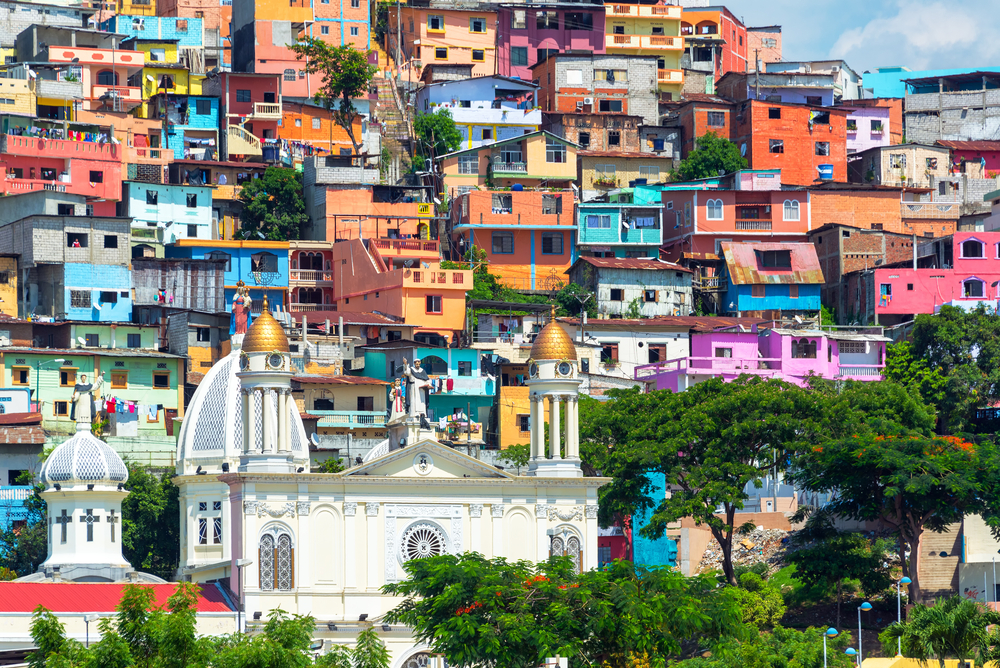
Where are Your Valentine’s Roses From? Probably 5,000 Kilometres Away
Endangered Species: Galapagos Conservancy
Twelvefold Increase in Zika After Earthquake– Yahoo News

CIA World Fact Book: Ecuador
Project Options
History
The history of Ecuador is divided into five periods: Pre-Columbian, Conquest, Colonial Period, War of Independence, Gran Colombia and Simon Bolivar. Study the different periods and compare and contrast. In addition, visit the Old Town section of Quito and notice the Spanish and Inca influence. Why is there very little Inca influence?
Be sure to consider and investigate the following:
- Incan Empire and its fall
- The first revolt against Spain
- Independence
- Dictatorship
- Democracy
- Gold
- Trading routes
- Women in battle
Indigenous Groups
Identify the different indigenous groups in Ecuador. Once you have completed your research take a field trip to several of the communities to see how they operate their daily life.
Prepare a multi-media project with photos, video and text that outlines your discoveries.
- How long have they been around?
- Are they dying out or is the group growing?
- Where are they located?
- What are the visual elements of their dress that separates them from other groups?
- What are their life philosophies?
- What ceremonies are of importance in their group?
- How are the economic conditions? What are the challenges and advantages?
Language
Examine the linguistic landscape of Ecuador. Spanish is the official language, but there are others. Study the ways in which this rich heritage of language has build the country and ways in which it holds it back. What is being done, on the one hand, to preserve this cultural heritage, and on the other hand to build the country forward through language?
Geological Formations
Equador is loaded with volcanos. Identify the main volcanoes of Ecuador and how they came to be?
Are there advantages and disadvantages to having so many volcanoes in close range of each other?
Which volcano is the tallest in the world? And what parameters make it taller than Mount Everest?
Hike to Pichincha, Cotopaxi, inside Quilotoa or any other volcano of your choosing. How do they differ? Why? What did you notice about the terrain?
Galapagos
Darwin became famous for his discoveries related to the science of evolution, which mostly took place in the magnificent Galapagos islands. Although it is expensive to visit the area if the opportunity arise be sure to seize it. Take time to study the following in Galapagos:
- The birds, particularly the Frigates, Blue Footed Boobies and the Finches.
- The history of the islands and the mysteries surrounding them.
- The volcanoes, the lava and the impact it has had on the islands.
- Sea lions, Iguanas (land and marine), sharks, crabs, sea turtles, tortoises.
- How are each of these impacted by the weather conditions?
- Are they native to the area? What do they eat?
Geodesic Missions & The Equator
There were three geodesic missions in Ecuador with the first one starting in 1735. Research each mission and identify its discoveries, how they vary, how the measurements were done/tools used, who were the key players and why these missions were crucial. Also, take time to visit the following and share what you have learned in an essay.
- The Equator
- The Intinan Solar Museum
Economics: Investigate an Industry
Suggestions include but are not limited to:
- Oil
- Bananas
- Shrimp
- Fish
- Coffee
- Textiles
- Coca Leaf
Cover the process, exports, industry standards, human impact, community impact, working conditions, the influence of unions, or organizations for fair trade or other regulatory bodies. How does this industry contribute to Ecuador’s growth and economy?
Medicinal Plants
Spend a day with an indigenous farmer to understand the medicinal uses of plants and flowers within their community. Also, learn about the spiritual enlightenment, ceremonies and cleansing that is performed on community members to remove negative energy, improve health and free the spirit.
Take part in a negative energy removal ceremony. Did you feel different? Do you believe these practices work? Have you done anything like this before?
Enjoy an organic meal with your host. Did you feel more energized eating chemical free? Was the food tasty?
What was your favorite medicinal plant and why? Were the medicinal plants in a sacred forest or did you find them elsewhere? Do you believe in the power of medicinal plants? Why or why not?
Take your experience one step further by reading information online or in a book about areas that were of particular interest to you.
Profiles of ….
Conduct a series of at least five interviews within a country.
The point of the exercise would be to get a well rounded view of what it is like to live in a particular country from a variety of ages, incomes, employments and experiences. This could be conducted as video, or as text and the student would be expected to do an analysis of the experience/information.
People you might profile:
- Farmers
- Teachers
- Restaurant owners/workers
- Church officials
- Government officials
- Doctors or Nurses
- Street vendors
- Children
- Parents
- Drivers
- Artists or Musicians
- Laborers
- NGO workers
- Long term expats
Problems & Solutions
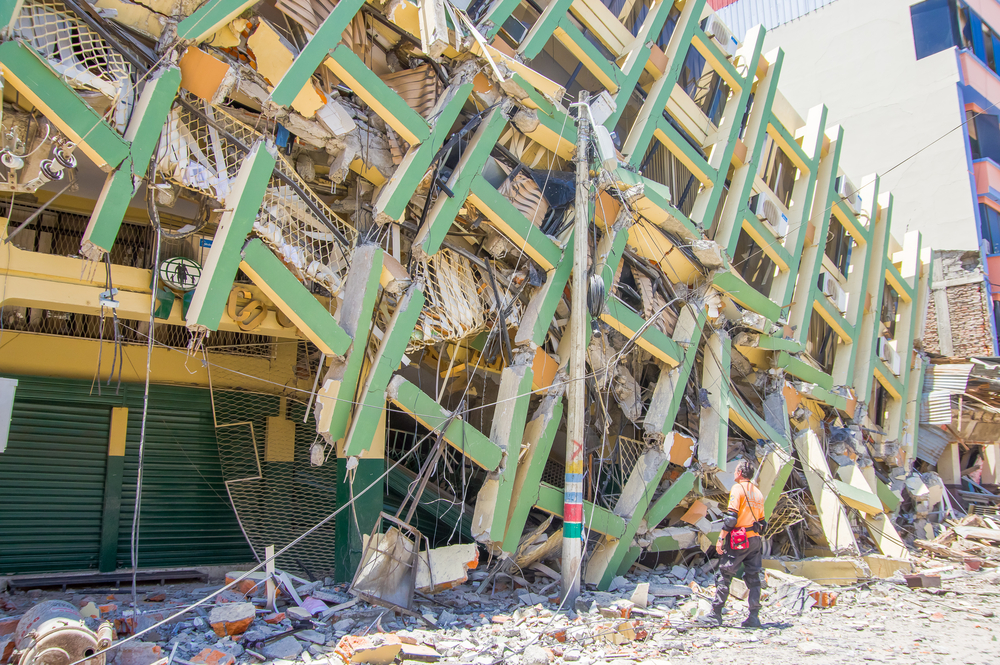
Study a current problem within the country and suggest/support a solution:
Wildlife Conservation
Ecuador is home to the Galapagos, which is full of rare and endangered species of birds, fish and animals. The highlands of Ecuador and the Amazon also contained threatened habitats containing at risk populations. Whales, bears, monkeys, rats, seals, bats, tapir, armadillo, otters and more are on the list of threatened species in Ecuador. Study one or more of the endangered animals. Visit the habitat of this animal and try to see it in the wild. Are there any conservation efforts underway? Describe them. How effective have they been? Consider producing an article or a video to expose more people to the plight of this animal and why it’s important to support conservation efforts. Consider volunteering your time or resources to make a difference.
Post-Quake Reconstruction
In April of 2016 a major earthquake, 7.8 on the Richter Scale, rocked Ecuador. Hundreds died and the devastation to infrastructure was significant. Study some aspect of the quake and it’s aftermath. Investigate the field of seismology and earthquake predictions in Ecuador. Examine the frequency and effect of quakes on the region as part of the infamous ring of fire. Interview survivors and relief aid workers, or those involved in the continuing reconstruction. What was it like to live through the quake? What could have been done differently to prevent damage or speed recovery? What are the on going challenges that individual communities and the country at large face moving forward?
Zika Virus
In the three months since the April 2016 earthquake the incidence of Zika virus increased twelvefold. Zika is a significant health crisis in Ecuador and many other countries in the region. Study Zika. Where did it come from? What causes it? What are the effects long term on infected persons and their children? How is it transmitted? What is being done to stem transmission? How are you, personally, protecting yourself? Interview healthcare providers and local people about the virus and it’s impact in the areas you are traveling through.
Teen Pregnancy
22% of girls are married before the age of 18. However, this practice is completely legal, as the law allows marriage for girls over 12 years old, and boys over 14.
In the past few years, there has been an increase in the number of mothers giving birth between the ages of 15 and 19 years old. These teenagers fall victim to sociocultural clichés, given that their role in society is limited to reproduction and domestic chores.
On the other hand, Ecuador also has a high percentage of girls pregnant between the ages of 10 and 14. This is explained by the custom of families entrusting their girls to richer families or people, without any agreement or negotiations to ensure food and housing security.
Why do you think their has been an increase in pregnancies? Explain in detail. How would you attempt to solve this problem? Are there other solutions in place? What kind of results are they showing? Have the numbers surrounding sexually transmitted diseases increased? Has the country done anything to protect these children having sex? How does the pregnancy rate compare and contrast to other developing countries?
Malnutrition
Chronic malnutrition is one of the biggest problems authorities are now confronting. In fact, the numbers remain alarming despite efforts taken to reduce poverty and programs with the aim of improving the levels of instruction and hygiene for mothers.
There are regions, in particular rural areas, where over 50% of the children and adolescents live in poor households, without access to potable water, sanitation or health care facilities. Around 35% of Ecuadorians living in rural areas live in overcrowded houses.
Examine the social and economic effects of malnutrition on the country and present a possible solution, OR examine the solutions already on the ground and find a way to support them. This would not only be an academic project, but a social action project as well.
Violence
Crime is a severe problem in Ecuador. There is a very low rate of apprehension and conviction of criminals – due to limited police and judicial resources – which contributes to Ecuador’s high crime rate.
Examine the root causes of this. Examine the trends in violence. Who is most affected? Is Ecuador “safe” to travel in? Why, or why not? What was your experience? Examine the statistics and make comparisons within Latin America and the world at large.
Cultural Assignment Options
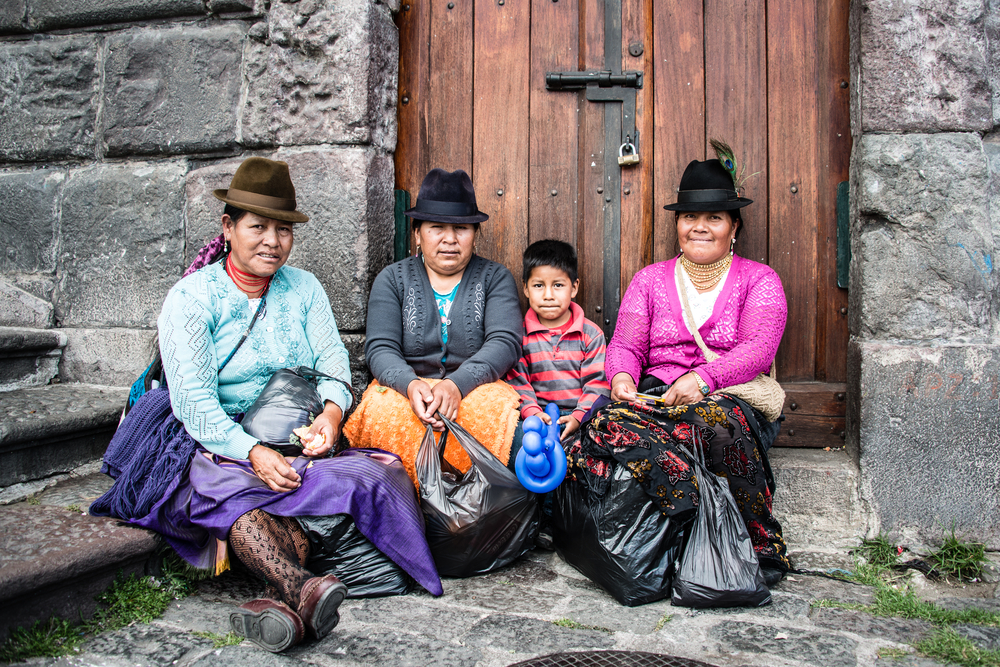
This is a list of ideas for projects that you can take and run with. In order to get credit for these projects there needs to be an “output” of some measurable sort. Common options would include a video project, a blog post, an essay, a published piece of work, or a certificate of some sort documenting the experience (in the case of a class taken).
Celebrations & Festivals in Ecuador
Ecuador is known for having some amazing celebrations and festivals. The New Year’s Eve tradition of the ano viejo is a custom that symbolizes the end of the year. By burning stuffed dummies and all of the baggage from the previous year locals are then able to more forward to the next year. Other amazing celebrations include the Day of the Dead (make sure you try Colada Morada and Wawa), Semana Santa (Easter week) processions and Carnaval!
Attend festivals. Compare and contrast them with each other. Examine the religious, historical and cultural traditions that they arise from. Compare similar celebrations you’ve experienced in other places in the world, or within your own culture.
Art & Multi-Media Projects
Study the art of a particular region and produce a multi-media project related to the art history and modern expression.
Some options include:
Jewelry from the Tagua nut: Research how to make this jewelry from one of the professionals you will find at the market. Learn about how they cut the nut, the coloring process and the design.
Pan Pipes: Make your own pan pipe from beginning to end.
Painting: From early painting at the ruin sites to modern expressions
Music: Traditional music, colonial influence and modern trends
Pottery: From the archeological excavations to modern creation
well as in the villages around Lago de Atitlan that combine language study with cultural immersion.
Sample the Foods
Document the experience of trying at least five brand new foods during your stay (a fun photo essay? or video?) Take it up a notch and learn to cook something local. Enroll in actual cooking classes, or learn from a local friend. Find a way to document this experience.
Meaningful Connections
What is a meaningful interaction? You get to decide that. In general, it should be an interaction in which cultural exchange took place and you learned something. Often this will be with a local person; sometimes it will be with another traveler.
Sometimes these interactions look like very little on the outside but are totally life changing on the inside. Other times, they are rock your world amazing from every angle. It could be a meal shared, an afternoon’s excursion, a discussion that opens your eyes in some way, a self revelation that happened without any words exchanged at all.
Spend a day with a local individual or family. Document your experience in photos, interviews and the written word. The best way to interact with locals is to just start chatting with them at markets, on tours or on the street. You can also ask other travelers if they have met anyone who has offered some insight into life in the country. If you are a family who have children attending a local school then have a party, invite a parent to coffee, basically just open up your home to new relationships.
Document this interaction and how it impacted you.
Study the Language
There are plenty of schools in Quito and Cuenca, but maybe a smaller community could offer a richer experience and more opportunity to practice.
Study the languages of the indigenous groups, particularly Kichwa. Then spend a week at an indigenous farm to get a richer experience with the language. Loma Wasi is an amazing experience.
Take a Class
There are many options! Don’t be limited by this list
Cooking: Take a class with a local family, rather than in a Spanish school with other travelers.
Art: Traditional art schools are always a great way to be exposed to local families and find that meaningful interaction listed above. However, there are other options for art in Ecuador as well. Weaving, embroidery, pottery, knitting. If you see an artisan at a market doing their craft ask them if they would mind giving you a class.
Religion: There is a lot of opportunity for Catholic religion education in Ecuador and the opportunity to experience many festivals related to religious events. In addition, there is the opportunity to have spiritual enlightenment from the indigenous cultures.
Agriculture: Indigenous farming, shrimp fishing, coffee and chocolate. You can pretty much find a class that relates to any of the top exports within the country.
Brick Making: This has become pretty popular in many of the indigenous communities. There is this tension between the farmers using the land for farming and the younger indigenous generations wanting it for brick making. Learn the art of brick making and farming in a class and then decide for yourself which one is better for the future of Ecuador.
Also, might be fun to “pay it forward” and share what you have learned in your class with another traveler over coffee. Document your experience on video and share it online with other travelers.
Procure some form of documentation from the class provider to document your experience. You might also create a video, or a piece of art, or write about what you learned and how you learned it.
Museum Visits
Find someone in the community who has a very strong grasp of the language and take a museum tour with them. Maybe even set it up as a weekly meet-up. You will have the opportunity to make an face to face connection with a local while learning about the culture through museum studies. Save the ticket stubs and share something that you learned.
Volunteer
There are numerous volunteer opportunities available, both advertised on line and unadvertised locally. Look for them at a school, a social project, an NGO, teaching English, building project, or something entirely different.
Create an opportunity to volunteer where you are able to help in natural disaster relief or poverty. There is great learning involved when an individual finds a need, organizes a group and brings the volunteer efforts to fruition. Document your experience on video for reference and once you are done write an essay on the experience. Share the essay with a large organization in the effort to get more funding for your cause. Preferably this work is for more than one day.
Live Local
Get out of the hostel, rent a place in a local village, or do a homestay.
- Spend a weekend at an indigenous farm helping work the land and connect with the culture.
- Spend a weekend sleeping outside in primitive conditions. Often the indigenous farmers sleep outside in the pasture to make sure no one steals their livestock. Document your experience through video and share it with other travelers on youtube.
Photo essay or a blog description of why living local was different than living in a hostel. How did this experience change the economics of your stay? What did you learn about the way locals live? What challenged you? What would you do differently next time?
Work Stay
Through an organization like WWOOF, HelpX, or Workaway you can arrange for an opportunity to work in exchange for your room and board in a number of capacities, from farm labour to hospitality. Lots of students make use of these experiences to lower the cost of their travels, while at the same time learning valuable skills or “trying out” various career areas that interest them.
Request feedback in the form of a short evaluation that can be used later for a CV or reference
Public Transportation Project
Take as many types of public transportation as possible.
Challenge yourself to take every type of public transportation available while you are in Guatemala. Create a photo essay or videologue of your adventures. What did you learn?
Attend a Religious Observance
One way to learn more about a country or culture is to study the religious aspect of life. Attend a church service, visit a shrine, or an indigenous ritual. Visit a religious festival or event. Or, if you’re very lucky, score an invitation to a wedding or funeral for a window into the way that religious ritual is woven into the fabric of life.
Compare and contrast this to your other experiences, at home and abroad. What did you learn about Ecuador, or Ecuadorians as a result of this experience? How did it make you feel? What did you learn about yourself?
How to Create Your Own Course Work
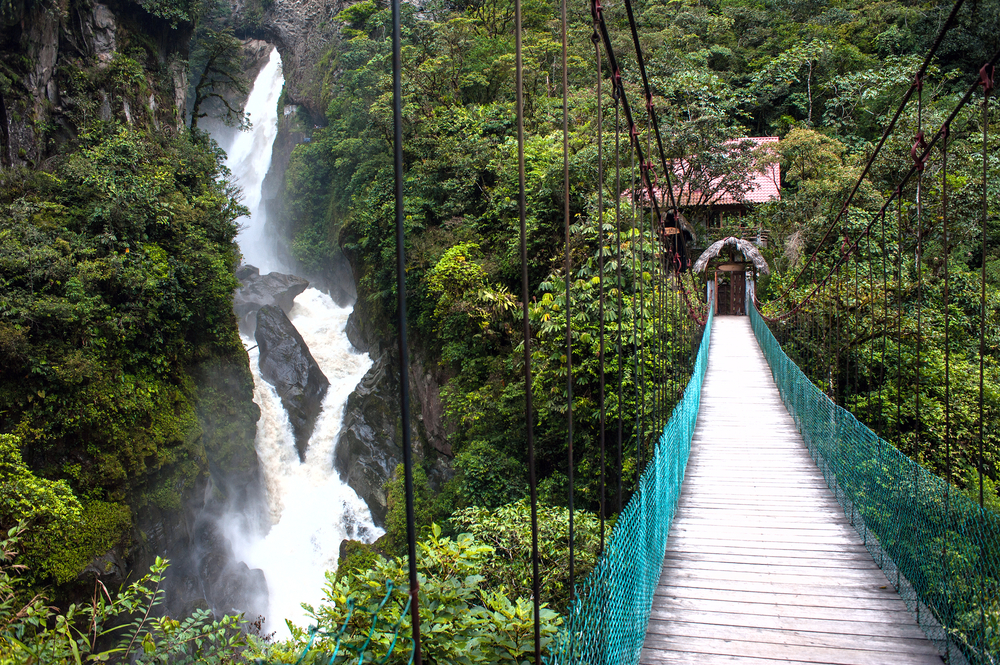
Ask
Learn to ask for what you want. If you meet someone interesting, ask them to teach you. Ask them for an interview. Ask to shadow them for a day or a week. You’ll be surprised at how eager people are to share what they know and teach when someone shows actual interest. Learn to ask questions. Learn to take social risks by putting yourself out there as a learner.
Plan
You have an idea or an interest. Something surprises you on your journey and all of a sudden you have a burning desire to know more. Plan your attack:
- Narrow your field of study to a particular question or topic.
- Compile resources: Look for teachers. Who knows what you need to know? Or who can you interview to learn more? Are there books or videos on the topic you’re interested in?
- Quantify it. How will you demonstrate what you have learned? A research paper, a video project, a photo essay, through art or music, a blog post, a published piece, an interview series, a mini documentary or do you have some other idea?
Produce
Produce a quality piece of academic work that reflects your experiential learning. The whole key to quantifying outside the box learning is to translate it into something that reflects the value of what you learned and how it contributed to your overall educational process.
Perhaps this will be as simple as a traditional research paper, depending on the depth and length of your study this could be as short as three pages or as long as a dissertation. Maybe you’ll produce a video for YouTube, or something grander, like a mini-documentary. Perhaps you’ll do something concrete instead, an art, or community action project and you’ll tell the story through a photo essay, or a series of blog posts. The possibilities are limited only by the resources you have at hand. Get creative. Think outside the box and truly experience your education.
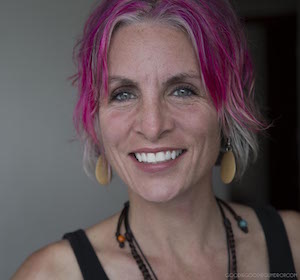 Jessica Sueiro is the founder of Goodiegoodiegumdrop.com and WorldTowning.com (coming October 1st)! Goodie Goodie Gumdrop is a blog dedicated to long-term family travel, world schooling and the digital nomad lifestyle, inspiring other families to slow travel, learn through the world around them and live a life authentic to their desires, hence living differently.
Jessica Sueiro is the founder of Goodiegoodiegumdrop.com and WorldTowning.com (coming October 1st)! Goodie Goodie Gumdrop is a blog dedicated to long-term family travel, world schooling and the digital nomad lifestyle, inspiring other families to slow travel, learn through the world around them and live a life authentic to their desires, hence living differently.
Jessica left the USA over two years ago with her hot latino husband Will and their two children who she affectionately refers to as AvaLar (Avalon and Largo). Their goal was to spend a year adventuring, learning through the world and strengthening their family bond. Somewhere along the way they discovered that a year was not enough and they decided to make this long-term, slow travel lifestyle their new normal. Their plan is to change countries every 6-12 months for the next decade and eventually land on a boat.
Jessica lives a life that she once dreamed of, but thought was impossible. She believes in dreaming big, living authentically, learning through the world and making every single day count. Now is now!
Do You Have Anything to Add to This Resource Page?
We’re actively seeking to grow these resources in an open-source spirit. Please email jenn(at)bootsnall(dot)com with your edits or submissions of new information or materials.
Thank you!
Photo Credits: JKom / Shutterstock.com, Fotos593 / Shutterstock.com
